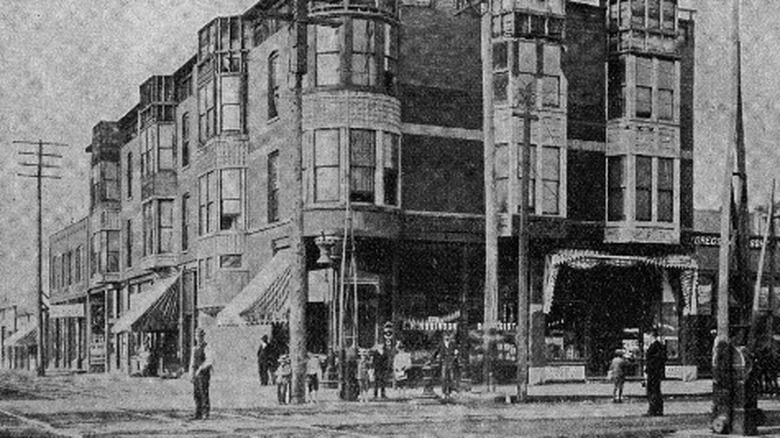How Historically Accurate Is Devil In The White City?
The non-fiction book "The Devil in the White City: Murder, Magic, and Madness at the Fair That Changed America," by Erik Larson, was originally published in 2003. However, it has remained popular due to its terrifying details about one of America's first serial killers, and the anticipation about its adaptation into a television series (via Variety). As reported by Erik Larson Books, "The Devil in White City" tells the stories of two men: architect Daniel Burnham and convicted serial killer H. H. Holmes, who were both an integral part of Chicago's 1893 World's Fair.
In the late 1890s, the Burnham & Root architectural firm was hired to oversee construction during the World's Columbian Exposition of 1893, which is commonly referred to as the World's Fair. As reported by Britannica, Burnham was initially hired as a consultant on the project. However, he was later appointed head of construction and took over completely after Root's death in 1891.
In addition to planning and supervising the construction of approximately 150 buildings, Burnham also was responsible for the World's Fair's sewage, transportation, and water systems. Britannica reports Burnham is often credited with "the development of the modern American city."
Holmes, who moved to Chicago in 1885, had his own, far more nefarious, plans for Chicago's 1893 World's Fair. As reported by Biography, Holmes owned a three-story building, which served as his home and business. However, it was later referred to as the "Murder Castle" or the "House of Horrors."
The Devil in the White City was heavily researched
During Chicago's 1893 World's Fair, H.H. Holmes advertised his home as a hotel for the fair's guests. However, as reported by Biography, many of the guests simply vanished after checking in. Although the building had a number of guest rooms, it also had several soundproof rooms, secret passageways, and trap doors. There are also reports that Holmes kept quicklime, vats of acid, and even a crematorium, in the basement, but History suggests the reports may have been "overly embellished or even fabricated ... "
Following the conclusion of the 1893 World's Fair, Holmes fled Chicago and moved to Boston, where he was arrested in November 1894 for killing his business associate, Benjamin Pitezel. History reports that after his arrest, Holmes confessed to killing as many as 200 people in his "Murder Castle." However, the actual number of victims remains unclear. As reported by Biography, he changed his story, including the number of victims, numerous times.
Although some of the details surrounding Holmes' crimes seem unbelievable, "The Devil in the White City" was heavily researched. As reported by Chicago Tribune, Erik Larson begins his book by stating, "However strange and macabre some of the following incidents may seem, this is not a work of fiction. Anything between quotation marks comes from a letter, memoir, or other written document." The book also contains 857 footnotes, which refer to 139 sources, including archives, articles, and other books about Burnham, Holmes, and the World's Fair.
Portions of the book were embellished
Although Erik Larson conducted extensive research to ensure the accuracy of "The Devil in the White City," certain details in the book were clearly embellished. As reported by Chicago Tribune, the specific dialogue between Holmes and his victims, for example, is unknown. In those cases, Larson admittedly "used threads of known detail to weave a plausible account" of the conversations. Portions of "The Devil in White City" also include minute details about the murders, which, in reality, were only known to Holmes and his victims.
Chicago Tribune reports that "The Devil in the White City" is not a traditional non-fiction book, as it is written in the style of a novel. Instead, it is more accurately described as "creative non-fiction." Patrick T. Reardon, a staff reporter for Chicago Tribune, said it is difficult, at times, to tell which parts of Larson's book are embellished and which are taken from historical record. Reardon said, "Unless readers are constantly interrupting the story to go to the notes in the back ... they have no indication when Larson is recounting facts and when he's speculating." Reardon suggests Larson could have included phrase, such as, "The murder might have happened this way ... " to avoid any confusion.
According to Reardon, the danger in labeling "creative non-fiction" as "non-fiction" is that the embellished content may be taken as fact, and referenced by other writers or historians, thereby spreading misinformation.


